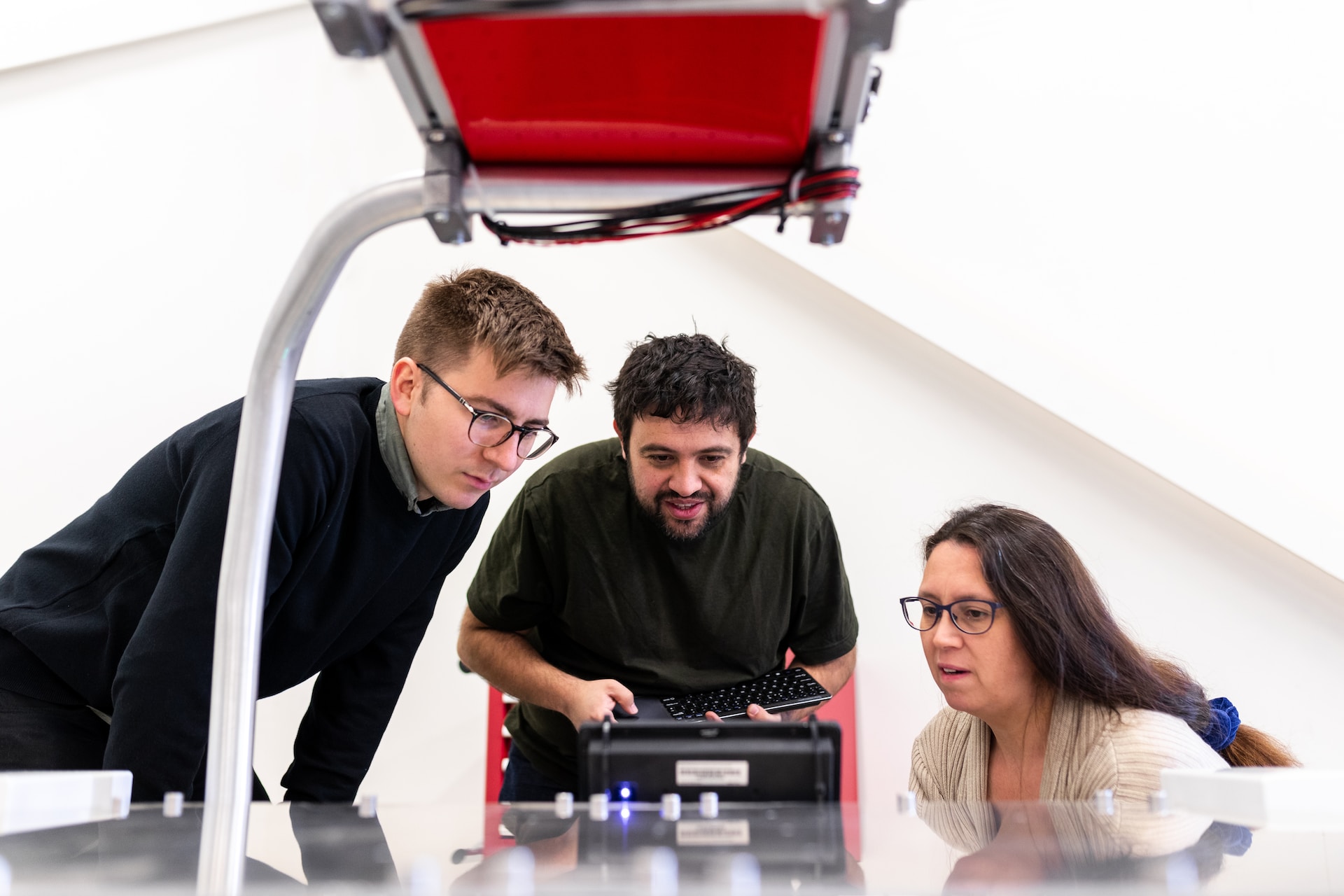The landscape of the business world is always evolving. The role of a product owner, for instance, has grown significantly in importance with the increase in the use of the Scrum agile framework.
Agile methodology, particularly Scrum, has revolutionized our approach to managing complex software development processes, leading to the advent of this exciting new role.

Scrum is an iterative approach that breaks down larger projects into manageable units called 'sprints.' It emphasizes teamwork and constant reevaluation of tasks. Within this framework exists an individual known as the product owner. A pivotal player whose responsibilities bear considerable weight on the success or failure of a project. Understanding the roles and responsibilities of a product owner can shine a light on how they contribute to achieving strategic business goals.
This article will delve into major product owner responsibilities. How do product owners contribute to the vision? We will reveal how to carve your path as a successful product owner in today's competitive landscape.
Main Responsibilities of a Product Owner
Starting with the fundamentals, let's dive into the sea of responsibilities that a product owner handles. From aligning teams to creating compelling product visions, a product owner wears multiple hats. They embody the key role in nurturing and shaping an organization's product from conception to realization.
Here are the nine primary product owner responsibilities that draw up a concrete job description:
1. Manage and Prioritize the Products' backlog
Being at the helm of maintaining and prioritizing the product backlog is one of the key product owner responsibilities. Picture it as an exhaustive 'to-do list.' It contains every feature, fix, and idea intended for implementation in future development cycles. It provides transparency about what needs to be done next while managing expectations around deliverables.
Since we're dealing with an agile framework, the backlog isn't a rigid list, either. Product owners optimize this list based on business value or urgency. They must ensure all the stakeholders' needs get due attention. This dynamic tool allows them to communicate efficiently with their teams.
2. Create and Communicate the Product Vision
Creating and communicating a compelling vision for the product is another core responsibility for any successful product owner. This refers to examining niche market trends, assessing customer requirements thoroughly, and defining success in relatable terms. Naturally, it is often done in collaboration with other team members who can provide insights from different angles.
Product vision typically means a concise explanation of the product's purpose. It covers how it'll deliver value to the target market and what that'll mean for users. Such a grand picture is essential for the product's roadmap. It guides the rest of the team and helps keep everyone focused on objectives.
Product owners then share this vision with stakeholders and teams, ensuring everyone on board understands where they're heading together. This helps foster unity in purpose and direction among team members, which is critical when navigating through complex decision-making processes.
3. Weight and Prioritize needs
Returning to the backlog, the product owner is responsible for defining levels of importance and urgency. For example, different tasks require different amounts of effort, time, and even budget. It's up to product owners to assign appropriate levels of priority to each task. This way, the team can focus on what matters first and ensure all stakeholders' needs are met.
Product dependency management often involves constant interaction with various stakeholders like customers, business executives, and development teams. They can consider customer feedback, business goals, and the team's capabilities to ensure smooth sailing.
An adept product owner excels in distinguishing crucial needs from desirable wants. A prime example would be deciding between upgrading the user interface per recent trends or fixing bugs in the existing software. A balance must be struck to maintain user satisfaction while keeping the platform robust.

4. Collaborate with Cross-Functional Product Teams
The term departmental silos often indicates a lack of communication among teams. This can be especially damaging in product development since the outcome involves various departments like marketing, design, and engineering. You won't get a good product if your design team doesn't communicate with the engineering team.
Product owners are instrumental in shaping excellent team dynamics where conversations are open, constructive conflicts animate creative solutions, and decisions are reached sympathetically. This leads to a strong sense of camaraderie amongst team members leading them to trust each other's competence more effectively.
5. Be the Primary Point of Contact (POC) for Stakeholders and Partners
A product owner serves as a communication bridge between stakeholders, partners, and the team. This role demands strong interpersonal skills as they must convey stakeholder concerns to their team. All while ensuring reasons for particular decisions or changes in direction are made clear.
As for partners, product owners must keep an eye out for any opportunities to leverage them or establish mutually beneficial relationships. This helps in growing the business and customer base.
Being an effective POC also means managing time amidst various meetings, queries, and clarifications. In an executive role, product owners keep everyone informed about the spectrum of activities concerning the product's development journey. They do so through regular updates and calls.
6. Research the Market and Customer Needs
One critical pulse that product owners have their finger on is market trends and customer needs. Understanding what customers want from a product features prominently in the job description of a product owner. It helps create products that resonate with users and remain relevant in saturated markets.
Employing research techniques like interviews, surveys, or personas can reveal invaluable insights about needs directly from end-users themselves. Armed with these insights, businesses can tailor products to match customer expectations. A good product owner constantly looks for such opportunities and updates their team accordingly.
7. Attend and Participate in Scrum Events
As part of the team, product owners actively participate in various Scrum events like sprint planning, daily scrums, sprint reviews, and retrospectives. These interactions enrich the overall workflow by establishing a structured rhythm.
During these essential touchpoints across the product development timeline, a product owner guides the team. They update on progress, clarify doubts, reinforce the product vision, and collect feedback at every iteration. This sets a foundation for continuous learning and improvement.
8. Develop Product Solutions
The journey toward building lucrative products isn't solely about conducting market research or defining a compelling vision. It requires circumventing obstacles and generating viable solutions too. This is where a product owner shines as an innovative problem solver who applies creativity to tackle challenges head-on.
In this capacity, the role demands practicing empathy for customers' problems while weaving practicality into solutions from team-wide brainstorming sessions. Simply put, a plausible solution needs to successfully intersect customer needs with business goals. However, it must never overlook technical feasibility.
For example, if a product owner is presented with a technically complex idea to implement, they must consider potential alternatives based on the available technologies.
9. Ensure The Product's Compliance
Finally, but no less important, is the responsibility of ensuring compliance of the developed product with set regulations or standards in its respective industry or domain. This is a detail that could carry hefty consequences if overlooked during production.
This dimension of their role revolves around grasping intricate industry-specific regulations and understanding technical complexities inherent to their products' ecosystem. These elements are key for launching lawful products that also meet high-quality standards.
From privacy regulations to safety standards, a successful product owner must ensure their product complies with all external requirements.

Skills Every Product Owner Should Have
Having dissected the responsibilities that shape a product owner's role, it is clear that this position requires a specialized set of skills to make a tangible impact. A quick survey among them will reveal they all share common abilities that make them excel in the roles of a product owner. Let's discuss these crucial skills:
Agile Methodologies: A finesse in Agile methodologies is essential for any product owner. This knowledge enables them to navigate the development process swiftly and manage changing priorities.
Product Management Skills: Strong
product management skills are essential. These cover understanding customer requirements, recognizing trends, and possessing the ability to carve out an effective product strategy to make informed decisions on priorities.
Strong Communication and Collaboration Skills: Clear communication and strong collaboration are critical for successful product owners as they spend considerable time interacting with teams, stakeholders, customers, and other business partners.
Business Analysis Skills: Another key competency for a successful product owner lies in mastering business analysis skills. This involves understanding how an increment adds business value or affects existing processes. It helps gauge potential impacts, which are critical when formulating strategies.
Thinking of Becoming a Product Owner?
Reflecting on these job descriptions of a product owner draws us towards realizing its pivotal position in an organization's success story. Not just from a technical standpoint but also from a business standpoint. Working in product ownership can have an immense impact on company performance.
The demand for skilled product owners continues to increase as many organizations are now heavily relying on agile teams. You, too, can become a part of this trend and sharpen your skills with the right training.
At Maven, we offer a host of online courses to help you gain the skill set necessary for a successful product owner. Whether you're considering embracing this challenging role or simply aiming at refining your current expertise, Maven offers professional courses rich in content that shed light on important facets of Scrum implementation. These industry-focused courses include:
Each course is designed strategically with hands-on assignments. You're supported throughout your learning journey while developing conceptual learning and creating opportunities to master practical applications. Sign up now and get up to speed with the latest product owner trends.

FAQ
Is product ownership a good career?
Absolutely! As organizations increasingly adopt Agile methodologies, the demand for skilled and competent product owners is on the rise. Individuals in this high-ranking role often find great satisfaction in seeing their product make a positive impact, as well as the potential to earn an impressive salary.
What is the difference between a project manager and a product owner?
While both roles are essential to a team's success, they have distinct responsibilities. A project manager focuses on executing projects within constraints like scope, time, and budget. A product owner, conversely, emphasizes aligning the product with market needs and business objectives. They have a long-term vision for the company's products.








